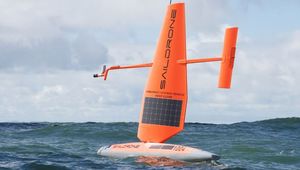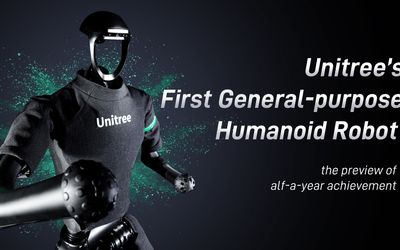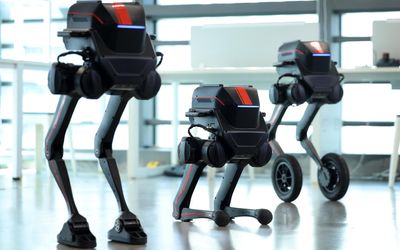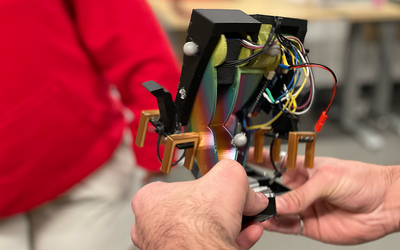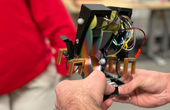Asimo
A humanoid robot designed for search and rescue applications. ASIMO (Advanced Step in Innovative Mobility), has the ability to recognize moving objects, postures, gestures, the surrounding environment, and sounds and faces, which enables it to interact with humans. The robot can detect the movements of multiple objects by using visual information captured by two camera "eyes" in its head and also determine distance and direction. This feature allows ASIMO to follow or face a person when approached.
Technical Specifications
| weight | 50 |
| height | 130 |
| walking speed | 2.7 |
| running speed | 7 |
| operating time | 1 |
| total DOF | 57 |
| power | |
| grasping force | 0.5 |
Overview
ASIMO (Advanced Step in Innovative Mobility), has the ability to recognize moving objects, postures, gestures, the surrounding environment, and sounds and faces, which enables it to interact with humans. The robot can detect the movements of multiple objects by using visual information captured by two camera "eyes" in its head and also determine distance and direction. This feature allows ASIMO to follow or face a person when approached.
The robot also interprets voice commands and human gestures, enabling it to recognize when a handshake is offered or when a person waves or points, and then respond accordingly. ASIMO's ability to distinguish between voices and other sounds allows it to identify its companions.
ASIMO is able to respond to its name and recognize sounds associated with a falling object or collisions, which allows the robot to face a person when spoken to or look towards a sound. ASIMO responds to questions by nodding or providing a verbal answer in different languages and can recognize approximately 10 different faces and address them by name.
References
Discusses the history of the humanoid, design choices, human interaction abilities, and an assortment of technical specifications.
Describes the planning algorithms and environmental models used to develop the desired walking method within the ASIMO robot. Also includes tests with obsticals in the humanoid's path and future work which includes incorporating visual sensors into the path planning sequence.
Explains the structure of the root system for intelligence, integrated subsystems on its body, and their new functions. Also looks at the robot's speech system and sound localization features and gesture recognition aspects.
